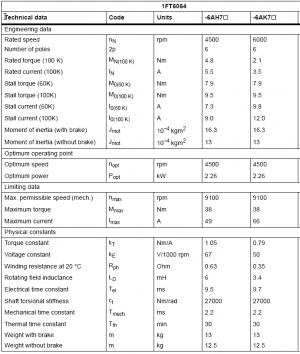- Joined
- Mar 26, 2018
- Messages
- 2,725
If you want, shoot me a PM and lets chat. It might depend on the motor rated voltage and the DC bus voltage you have available. The the drive's DC bus voltage is too low, there will come a speed at which the drive output voltage minus the motor back EMF is insufficient to saturate the windings of the motor (based on winding inductance) before the rotor has passed and the next winding must start its commutation cycle.In spindle motor news... I've run in to a bummer with those Siemens servos.
I'm unable to get them to spin faster than about 4200rpm. Looks like I didn't do enough homework on the datasheet and my bus voltage (~340vac) just isn't enough to get them to rated speed. That, or I'm completely lost on the drive tuning and motor parameters.
Unless someone has some suggestions on drive tuning, looks like I may be back to the BLDC plan.
The motor will perform with full torque up to around this critical speed and then performance quickly falls off. I can run Allen Bradley 400V class servos on a 200V drive system and get about 60% of the top speed of the motor. Likewise I can run a 200V system on 120VAC input to the drive and again get about 60% of the top speed of the motor.
This is somewhat the same phenomena that is seen in stepper motors and why running a stepper drive at a higher DC input voltage yields higher motor top speeds.



